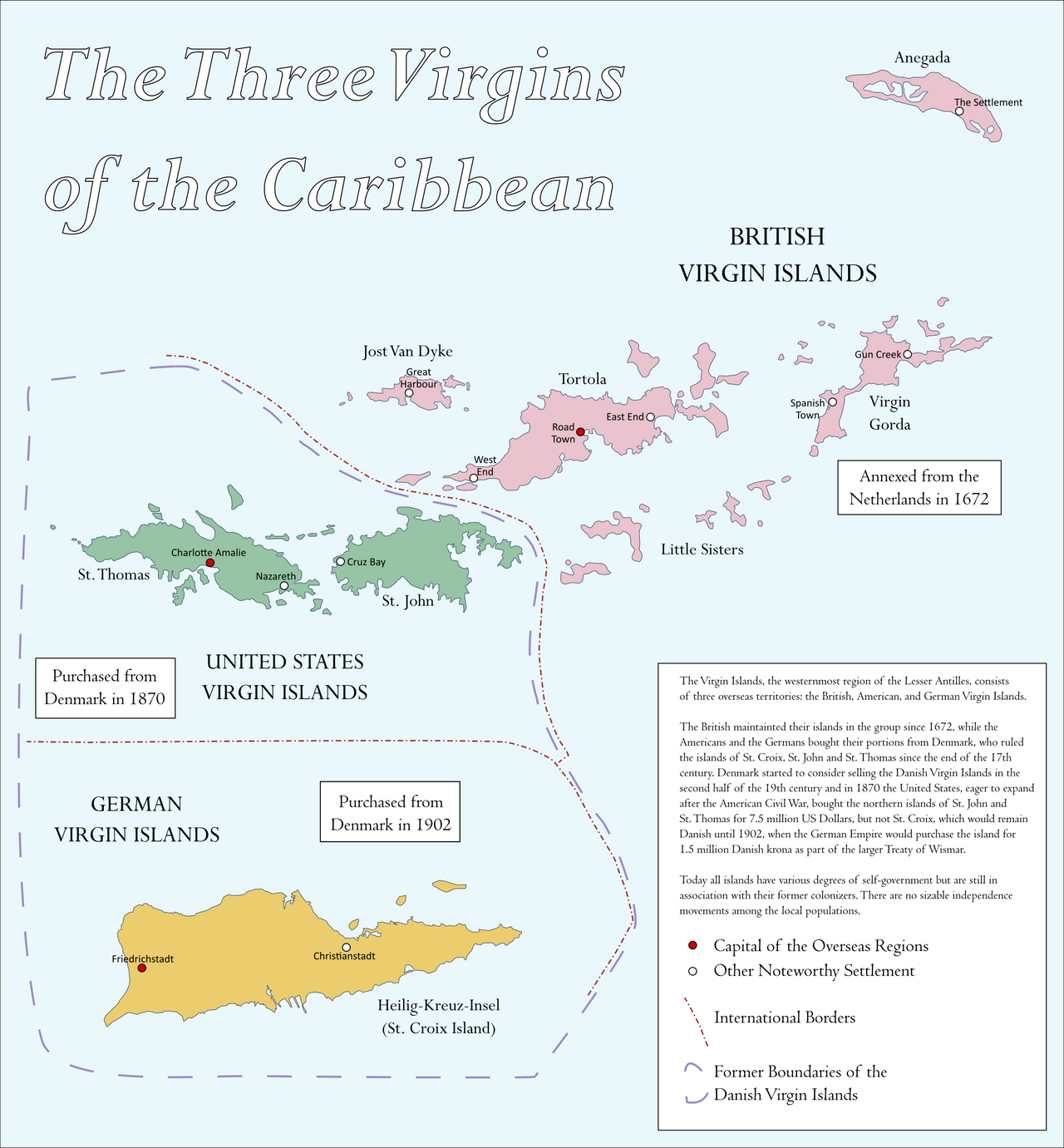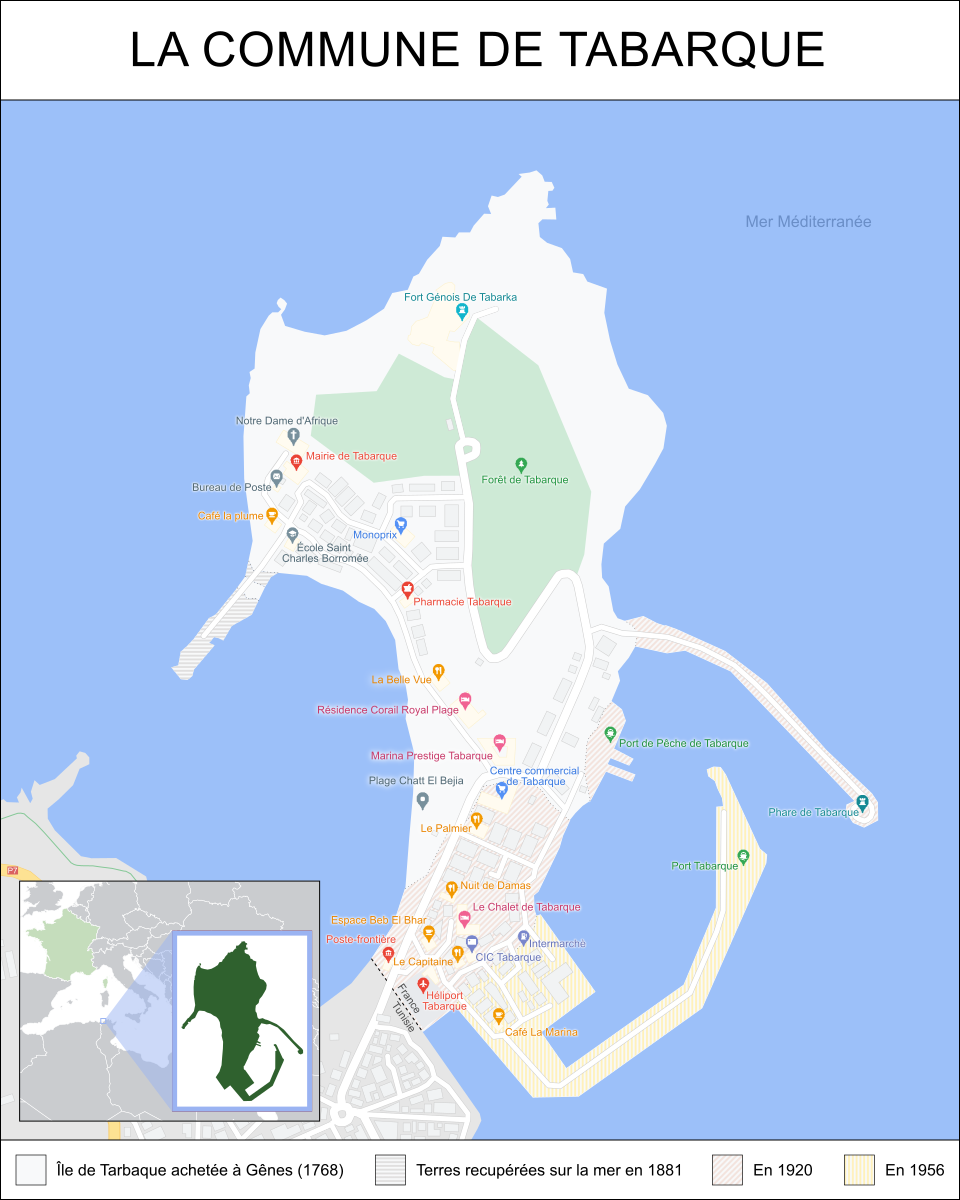Tabarque: The French Ceuta
POD: Genoa doesn’t abandon Tabarka Island
By the late 18th Century, the once prosperous mercantile Republic of Genoa was in a state of terminal decline. The Republic’s Island possession of Corsica was in a state of full-fledged rebellion and Genoa was in financial ruin - owing a particularly large sum of money to the Kingdom of France (nearly 30 million pounds). When Corsican rebels captured the island of Capraia in 1767, it became clear that Genoa lacked the military strength to restore order in Corsica. Furthermore, the latest Genoese setback emboldened the Bey of Tunis, who took the opportunity to occupy the lightly defended Tabarque Island, the Republic’s last North African possession (after the Bey captured the island, the ‘Tabarchini’ inhabitants would mostly emigrate to Sardinia at the invitation of King Charles Emmanuel III).
The Republic of Genoa turned to its French ally to regain its lost possessions. In 1768, Genoa made France the following offer: In return for a payment of 2,000,000 livres tournois (paid in ten yearly installments of 200,000 livres tournois), Genoa would grant France the right to administer Corsica and Tabarque for 10 years, and Genoa would regain the territories once it repaid the debt it owed to France.
The French Foreign Minister, the Duke of Choiseul, welcomed the opportunity to expand France’s military reach in the Mediterranean and accepted Genoa’s proposal. Corsica was subjugated after a difficult invasion, but Tabarque was occupied without resistance from the Tunisians. In 1778, ten years after signing the treaty with France, Genoa was still unable to repay the debt owed to France. As far as France was concerned, Genoa had abrogated the treaty and Corsica and Tabarque were now French territory. By 1789, Genoa managed to raise enough money to pay off the debts it owed to France, but the Genoese attempt to reacquire Corsica and Tabarque was rebuffed by France – which was in the midst of revolutionary turmoil. That revolutionary turmoil would plunge Europe into decades of conflict and one consequence of those conflicts was the Republic of Genoa being permanently erased from the map (incorporated into the Kingdom of Sardinia-Piedmont). Now there was no doubt that Corsica and Tabarque belonged to France.
The island of Tabarque would be a mostly forgotten French possession for the bulk of the 19th Century. While the island was used by the French Navy as a forward base in their conflict against Barbary pirates (and as one of the staging points for the invasion of Algeria in 1830), the island itself had little economic value. While Coral fishing had once sustained a population of 2,000 on the island, the Coral reefs had long been exhausted by the time the French came into possession of the island. In 1872, the Census recorded only 67 inhabitants, mostly engaged in fishing.
However, the tiny island’s fortunes changed in 1881, when France established a protectorate over Tunisia. With Tunisia under French administration the island was able to benefit from economic integration with the mainland and began to grow in population. Land was reclaimed from the sea, and by 1920, the “island” of Tabarque was now connected to the mainland. In the following decades, more land was reclaimed to provide the commune of Tabarque with a proper port facility. In 1947, the population of the commune was recorded at 1,813 (mostly French, with minorities of Arabs, Jews, and Italians). In 1956, France ended its Protectorate over Tunisia, but held onto Tabarque – arguing that the territory was an integral part of the French metropole and not part of the protectorate. Tunisia rejected this – refusing to recognize de jure French control of the commune and claiming the territory for itself. While Tunisia made an ill-fated effort to seize the commune during the midst of the Bizerte Crisis in 1961, Tunisia has not made any further attempts to seize the Tabarque by military means. After France withdrew from Algeria, a number of Pied Noir families resettled in Tabarque.
Today, the commune of Tabarque is France’s only remaining possession on the mainland of Africa. Like the Spanish enclaves of Ceuta and Melilla, Tabarque is part of the European Union and Eurozone. The commune depends mostly on tourism to sustain its economy. In recent years, Tabarque has erected a border fence in an attempt to stem the flow of migration across the 112-meter-long border between it and Tunisia. Tunisia still claims possession of the island, but the overwhelming majority of the 2000 or so inhabitants desire to remain French.


